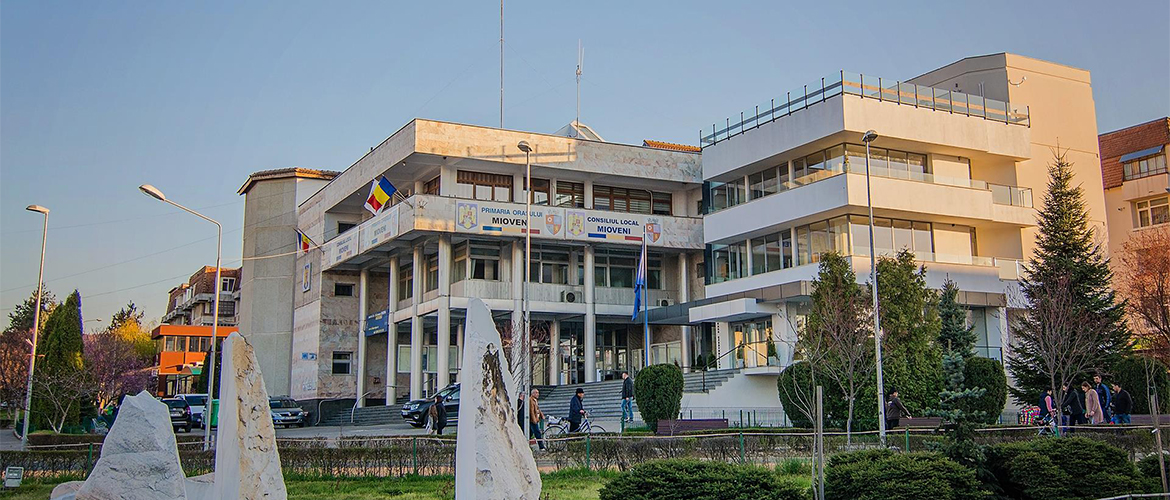History
Mioveni's history spans more than 500 years. Its first documented mention dates back to the year 1485. The city's name comes from a local prince, Mihu (Slavic: Mihov) Mihoveni (Mioveni), making direct reference to this society's citizens. Mioveni's main historic landmarks date back to the beginnings of the human social development, a fact proven by the discovery of polished stone tools and Bronze Age pottery in the neighbouring areas. Up until the 1989, current Mioveni was a commune, called Colibasi, a suburban commune belonging to Pitesti. On the 19th of April 1989, this commune becomes the city of Colibasi by Presidential Decree. In 1996, as a result of the actions taken by the local authorities, the city of Colibasi becomes once again the city of Mioveni (according to the Law no. 35, from 05/18/2015, issued by the Romanian Parliament and published in the Official Gazette no. 102/, from 05/20/1996).
The industrialization and urbanization process during the communist period, as well as the founding of the two great plants, the Automobile Manufacturing Plant and the Nuclear Research Institute, led to the destruction of the village homes belonging to the locals and the building of apartment buildings for the new employees, which came from different areas of Arges and Muscel. Yet, more than the destruction of the village hearth, the industrialization process caused real dramas amongst the locals, who fought in order to keep their cultural and historic identity, their traditions in thisarea.
Climate
Arges county falls into the category of continental climate. The area of the city of Mioveni belongs to the central climatic district of the Wallachian Plain. The climate is generally soft, with mild winters (with a temperature between -10ºC and -15ºC) and not so hot summers (with a temperature between +18ºC and +20ºC). The average temperature in July is +22ºC, while the average temperature in January is -30ºC. The average annual North-Western wind frequency goes up to 18%, while the Western one goes up to 13%. Average annual wind speeds are 2,3 m/s for the North-Western area and 1,8 m/s for the Western area.
The average rainfall quantity registered in the area of Mioveni is between 700-800 mm/year. Regarding the rainfall regime, variations appear from month to month. During summer, the rain episodes are very quick and abundant, with a strong torrential character leading to destructive effects.
Landscape
The city of Mioveni is located in the great Subcarphatic unit of the Getic Plateau or the Getic Piedmont (that continues with Muscelele Arges), more specifically in the sub-unit of the Candesti Piedmont.
The geomorphology of the Candesti Piedmont is very complex, consisting of terraces and extended and smooth crests fringed by large and rich valleys of: The Lady’s River (Doamnei) (at the administrative border with the township of Maracineni), the Fair River (Targului) (at the administrative border with the township of Darmanesti) and Argesel river (in the North-Western vicinity of the quarter of Racovita and the city of Mioveni).
Population
According to the official census from 2022, the stable population of the city of Mioveni sums up a number of 29.317 citizens. These numbers place the city 2nd in Arges county, after Pitești, which holds over 55% of the urban population of the county. Out of the total population, 14.988 of the individuals are men (51,12%), and 14.329 of the individuals are women (48,88%).









